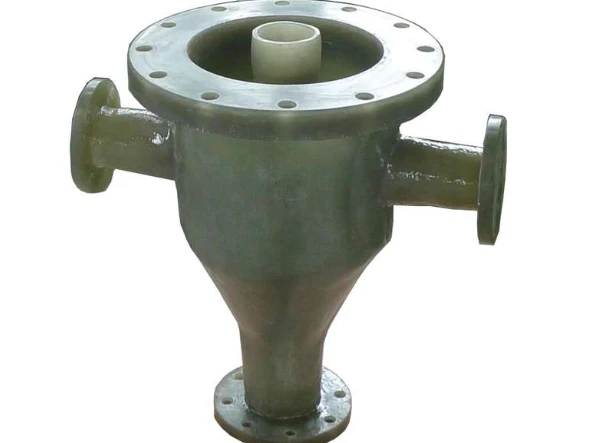
-
 Afrikaans
Afrikaans -
 Albanian
Albanian -
 Amharic
Amharic -
 Arabic
Arabic -
 Armenian
Armenian -
 Azerbaijani
Azerbaijani -
 Basque
Basque -
 Belarusian
Belarusian -
 Bengali
Bengali -
 Bosnian
Bosnian -
 Bulgarian
Bulgarian -
 Catalan
Catalan -
 Cebuano
Cebuano -
 China
China -
 China (Taiwan)
China (Taiwan) -
 Corsican
Corsican -
 Croatian
Croatian -
 Czech
Czech -
 Danish
Danish -
 Dutch
Dutch -
 English
English -
 Esperanto
Esperanto -
 Estonian
Estonian -
 Finnish
Finnish -
 French
French -
 Frisian
Frisian -
 Galician
Galician -
 Georgian
Georgian -
 German
German -
 Greek
Greek -
 Gujarati
Gujarati -
 Haitian Creole
Haitian Creole -
 hausa
hausa -
 hawaiian
hawaiian -
 Hebrew
Hebrew -
 Hindi
Hindi -
 Miao
Miao -
 Hungarian
Hungarian -
 Icelandic
Icelandic -
 igbo
igbo -
 Indonesian
Indonesian -
 irish
irish -
 Italian
Italian -
 Japanese
Japanese -
 Javanese
Javanese -
 Kannada
Kannada -
 kazakh
kazakh -
 Khmer
Khmer -
 Rwandese
Rwandese -
 Korean
Korean -
 Kurdish
Kurdish -
 Kyrgyz
Kyrgyz -
 Lao
Lao -
 Latin
Latin -
 Latvian
Latvian -
 Lithuanian
Lithuanian -
 Luxembourgish
Luxembourgish -
 Macedonian
Macedonian -
 Malgashi
Malgashi -
 Malay
Malay -
 Malayalam
Malayalam -
 Maltese
Maltese -
 Maori
Maori -
 Marathi
Marathi -
 Mongolian
Mongolian -
 Myanmar
Myanmar -
 Nepali
Nepali -
 Norwegian
Norwegian -
 Norwegian
Norwegian -
 Occitan
Occitan -
 Pashto
Pashto -
 Persian
Persian -
 Polish
Polish -
 Portuguese
Portuguese -
 Punjabi
Punjabi -
 Romanian
Romanian -
 Russian
Russian -
 Samoan
Samoan -
 Scottish Gaelic
Scottish Gaelic -
 Serbian
Serbian -
 Sesotho
Sesotho -
 Shona
Shona -
 Sindhi
Sindhi -
 Sinhala
Sinhala -
 Slovak
Slovak -
 Slovenian
Slovenian -
 Somali
Somali -
 Spanish
Spanish -
 Sundanese
Sundanese -
 Swahili
Swahili -
 Swedish
Swedish -
 Tagalog
Tagalog -
 Tajik
Tajik -
 Tamil
Tamil -
 Tatar
Tatar -
 Telugu
Telugu -
 Thai
Thai -
 Turkish
Turkish -
 Turkmen
Turkmen -
 Ukrainian
Ukrainian -
 Urdu
Urdu -
 Uighur
Uighur -
 Uzbek
Uzbek -
 Vietnamese
Vietnamese -
 Welsh
Welsh -
 Bantu
Bantu -
 Yiddish
Yiddish -
 Yoruba
Yoruba -
 Zulu
Zulu
acid storage tank
Understanding Acid Storage Tanks Importance, Design, and Safety Measures
Acid storage tanks are critical components in various industries, including chemical manufacturing, pharmaceuticals, and oil and gas. These tanks are specifically designed to safely store acidic substances that can be corrosive and hazardous. The proper design, maintenance, and operation of acid storage tanks are crucial for both environmental protection and worker safety.
Design Considerations
The design of acid storage tanks is primarily influenced by the type of acid being stored. Different acids have varying levels of corrosiveness, volatility, and temperature requirements. For instance, sulfuric acid and hydrochloric acid are commonly stored in specialized tanks constructed from materials that can withstand their aggressive chemical properties.
Common materials used for acid storage tanks include fiberglass-reinforced plastic (FRP), polyethylene, and alloy steels
. FRP is particularly favored for its resistance to many corrosive chemicals, while polyethylene offers a lightweight and cost-effective option for less aggressive storage needs. Alloy steels, while more expensive, provide durability and can be treated to enhance their resistance to corrosion.The tank's design must also consider factors such as wall thickness, height, and diameter to ensure structural integrity. Engineers utilize specific formulas and standards, such as those provided by the American Petroleum Institute (API) and the American Society of Mechanical Engineers (ASME), to ensure that designs meet safety and regulatory standards.
Safety Measures
Safety is a paramount concern when dealing with acid storage. These substances can pose serious risks, including chemical burns, environmental contamination, and potential for explosions if mishandled. To mitigate these risks, several safety measures should be implemented.
1. Secondary Containment Acid storage tanks should be equipped with secondary containment systems. This could include bunds or double-walled tanks that prevent leaks or spills from reaching the environment.
acid storage tank

2. Regular Inspections Routine inspection and maintenance of tanks are essential. This includes checking for signs of corrosion, leaks, or structural weaknesses. A well-maintained tank is less likely to fail, which can prevent accidents.
3. Overflow Prevention Implementing overflow prevention systems, such as level sensors and alarms, can help reduce the risk of overfilling the tanks. These systems can alert operators before a potential overflow condition occurs.
4. Emergency Response Plans Every facility that uses acid storage tanks should have a comprehensive emergency response plan. This plan should detail procedures for containment, cleanup, and evacuation in case of a spill or leak. Proper training for employees on how to handle acid-related emergencies is also vital.
5. Personal Protective Equipment (PPE) Ensuring that all personnel involved in the handling and maintenance of acid storage tanks wear appropriate PPE is crucial. This includes acid-resistant gloves, goggles, and protective clothing to shield against accidental exposure.
Environmental Considerations
Acid storage tank failures can have severe environmental implications. Spills can lead to soil and water contamination, affecting ecosystems and human populations. Therefore, industries are increasingly held to stringent environmental regulations that require them to demonstrate responsible handling and storage of hazardous materials.
In response to these concerns, many organizations are investing in advanced technologies for monitoring and managing acid storage. For instance, remote sensor systems enable real-time monitoring of tank conditions, informing operators of any abnormalities that could indicate potential failures.
Conclusion
Acid storage tanks play a vital role in various industrial processes, but they also pose significant risks if not managed properly. Through careful design, comprehensive safety measures, and continuous monitoring, industries can effectively mitigate these risks, ensuring both worker safety and environmental protection. As regulations become more stringent and public awareness grows, the commitment to maintaining safe acid storage practices is more critical than ever. Maintaining a proactive approach not only safeguards lives but also promotes a sustainable and responsible industrial landscape.









